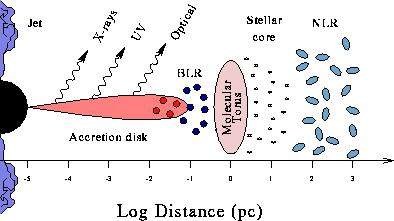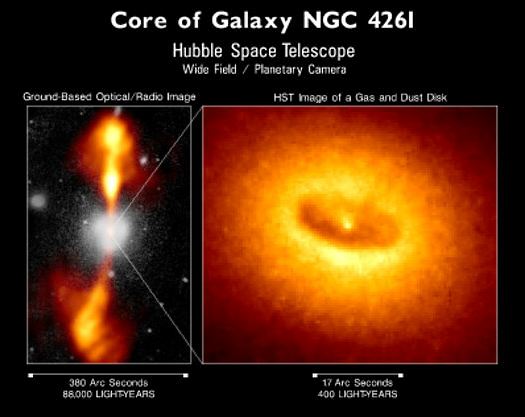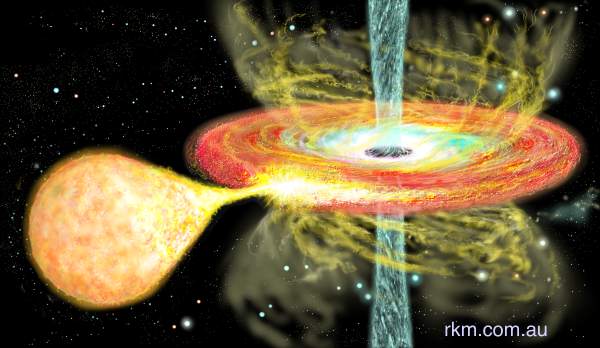Current Theories of Black Holes
Black Hole Anatomy
- We believe that we have some understanding of the structure near a massive
black hole. The main components are the black hole, accretion disk, broad line region, molecular
torus, narrow line region, and the jet. The sketch below shows
each of these components.

- Black Hole: We've talked about this and understand it completely (?).
- Accretion Disk: This is caused by the conservation of angular momentum since we
have to bring spinning material down into a very small region (a figure skater
on speed - a lot of speed!).
- Molecular Torus: This is in the shape of a doughnut. We believe that we have
seen one in NGC4261.

Here is
an artist's conception of what it would look like
if we lived in the torus.
- Broad Line Region (BLR): This is the area where gas clouds exist but can barely hold
themselves together due to their great speeds and high density. The cloud are
moving several thousand km/s.
- Narrow Line Region (NLR): Since they are further away from the BH, these clouds are
moving at more moderate speeds of a few hundred km/s.
- Jet: As material is funnelled down the accretion disk, some will go into the BH
but most gets flung out along the jets. It is very hard to get material to go
directly into the black hole.
- As we move closer to the black hole, everything gets hotter and more violent, and
therefore the radiation becomes more energetic. At the outer edge of the accretion disk
we see optical light mainly but the inner edge gives off mainly x-rays.
Soon, new observations may allow us to see the x-rays on the inner edge.
- The situation is similar for stellar mass black holes. The diagram below is
what we think the structure is if you had a star orbiting near to a black hole.
Winds from the star fall onto the accretion disk at a hot spot.

- If you try to feed a black hole with a star or a gas cloud, the material
will almost always end up in an accretion disk, no matter what the mass
is of the black hole.


